

Before going to Italy, we told our inimitable host Francesco that we had 3 touristy things on our 'must do' list: the studiolo in Urbino, a vineyard, and an olive harvest / processing. We already showed you pictures from our visit to Urbino so you know we managed to see that. We got the other items on list in also, plus a little extra!
On our first day in Italy, Francesco brought us to see an art exhibit of work by the photographerSebastião Salgado. He is from Brazil, but has travelled all over the world. Salgado definitely has a keen eye for photo composition. The exhibit was "Genesis" and there isa book by the same name. We loved the photographs (which we will leave you to check out on your own), and we also loved the building that housed the exhibit. It was in Ancona (point 20 on our map) in a historic building called 'The Mole' (Wikipedia article link). It was built in the 1700s as a quarantine house, but has been nicely repurposed to be an exhibit and performing space. Here are Paul and Francesco outside of the entrance; Francesco was probably checking out our lunch options.
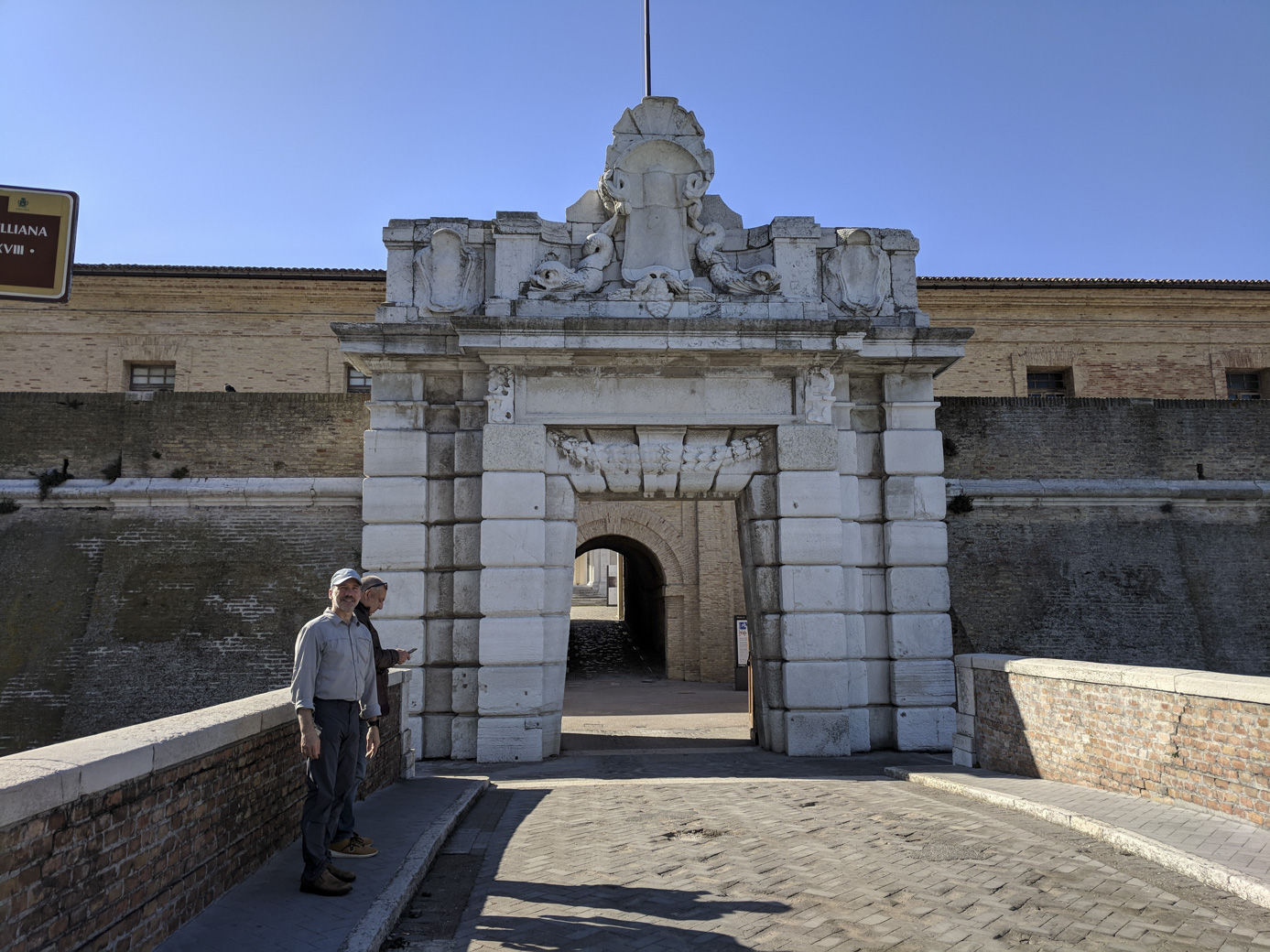
Lunch was at a local sandwich shop, in case you were curious.
After lunch, we drove out to Sartarelli Vineyard (point 19 on the map). They have multiple types of one of Anne's absolute favorite wines,verdicchio. She feels she didn't drink enough verdicchio while we were in Marche, a situation which will have to be corrected the next time we go.
Our tour was given by Patrizio, the co-owner along with is wife Donatella Sartarelli. He spoke limited English, and our Italian isn't great, so Francesco had to do a lot of translating for us. Here are Francesco, Paul, and Patrizio looking out over the vineyards. Sartarelli has 50 hectare of grapevines.
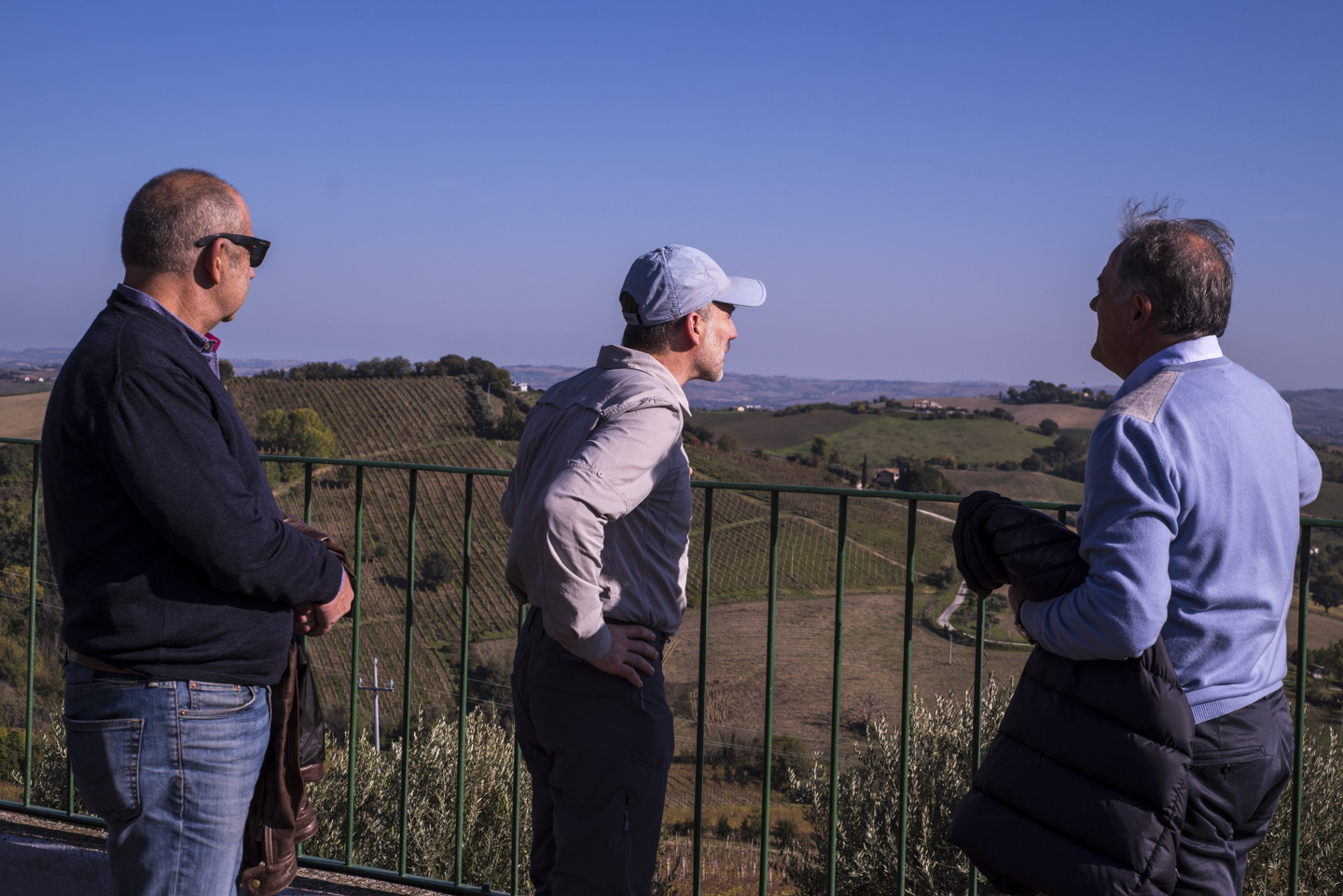
The view without them in the picture:
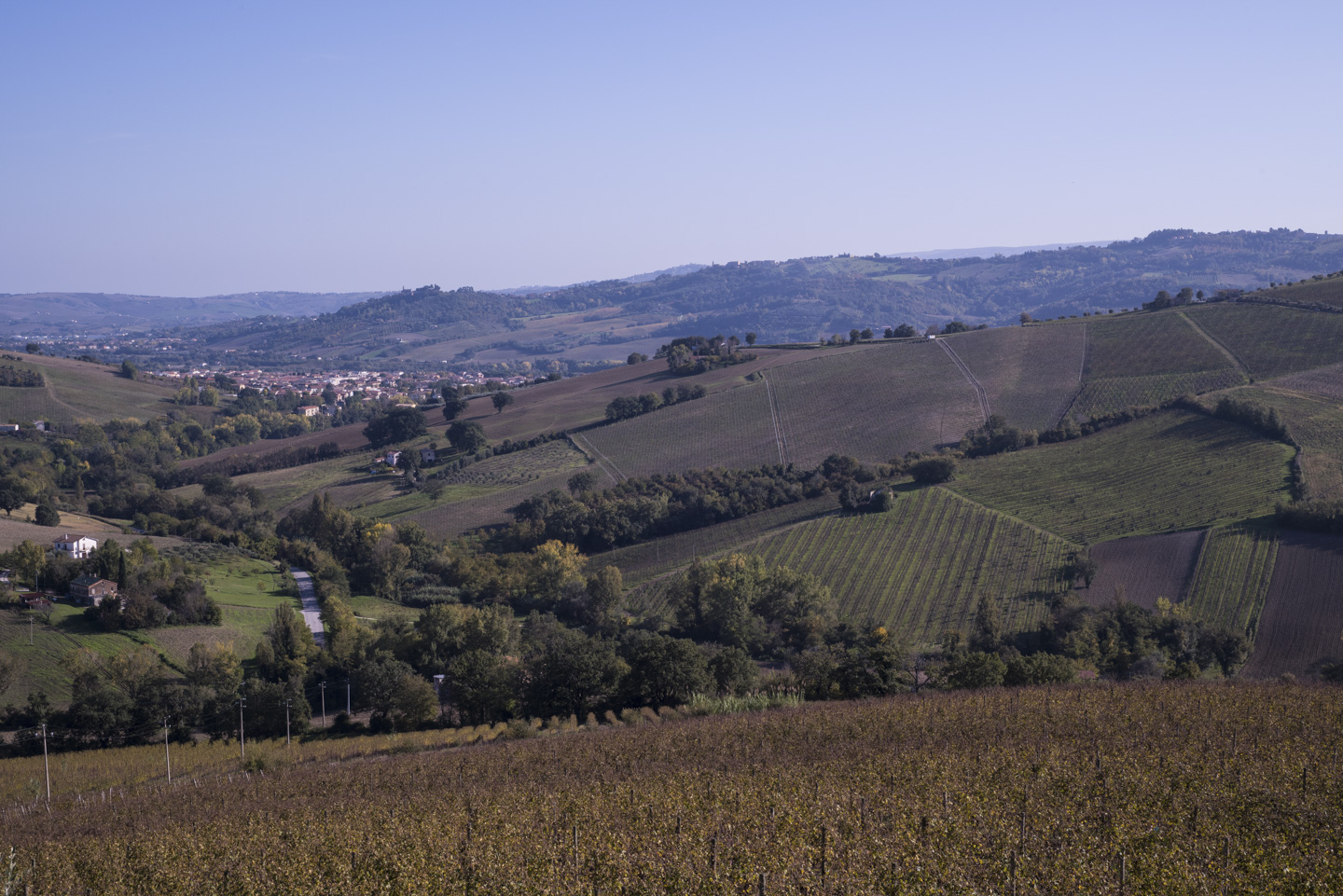
Here are Francesco, Anne, and Patrizio amidst the vast fermenting tanks of Verdicchio.
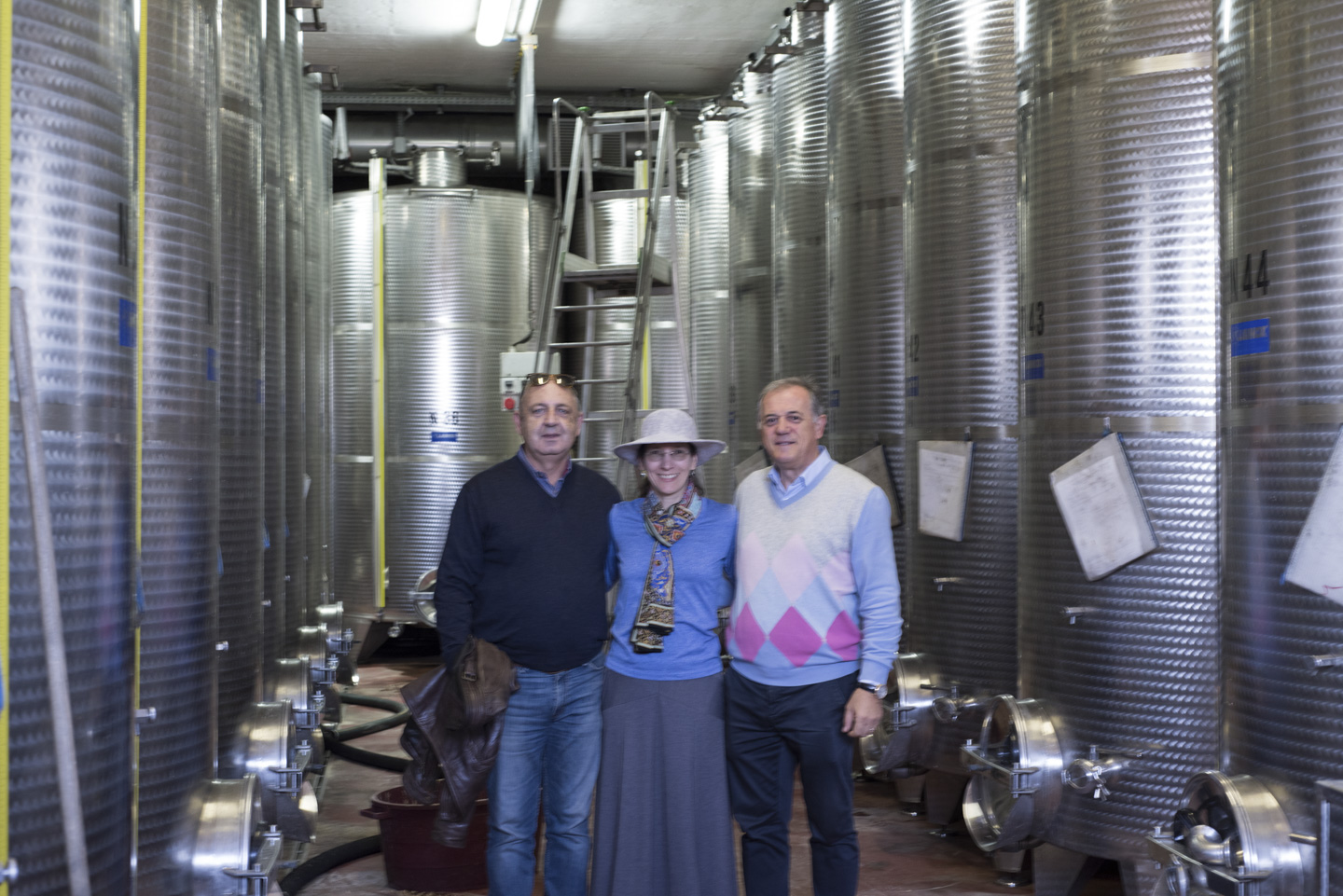
Here Patrizio is showing us some of the bottling equipment.
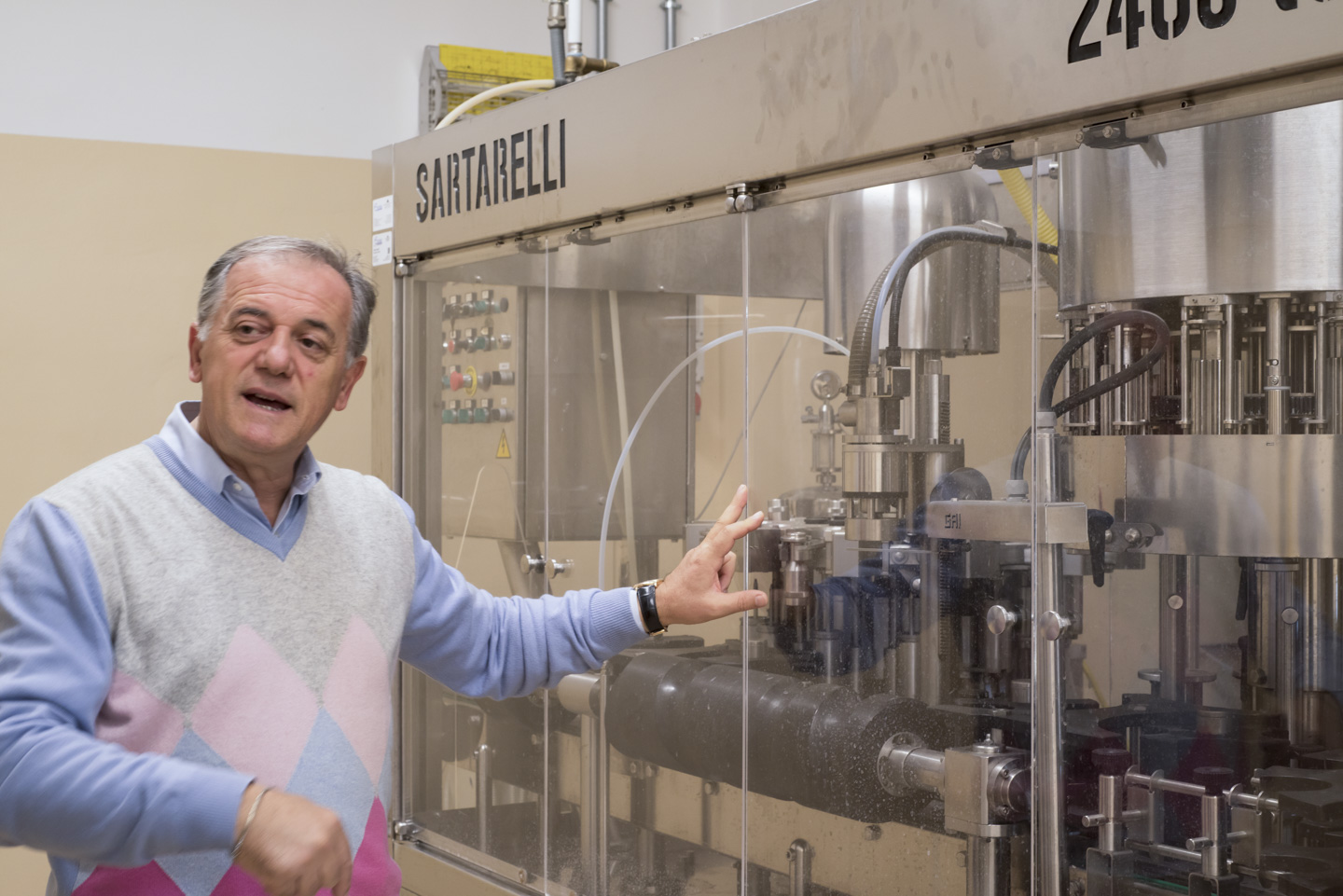
We had a tasting after the tour. We were able to briefly meet Donatello, and met their daughter Caterina. Their son, Tommaso, was a bit busy because he was a brand new father, so we didn't meet him.
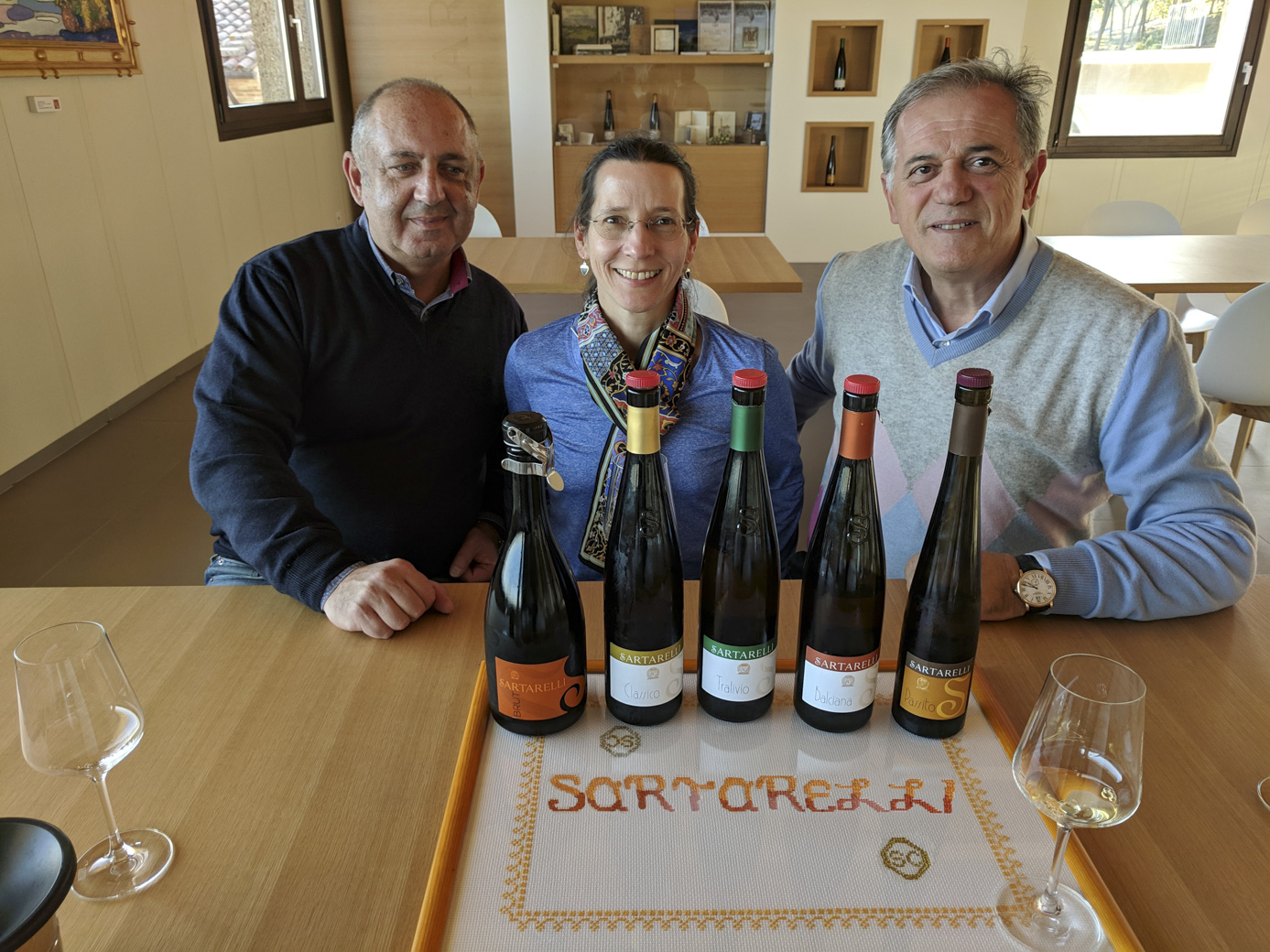
We have actually had their wine before, back in the United States. Some of the styles are available here. Sparkling Verdicchio, if you can find it, is worth trying.
In addition to the grapes, Sartarelli also has olives. Olive trees can get tall, but most are groomed to stay shorter and easier to harvest.
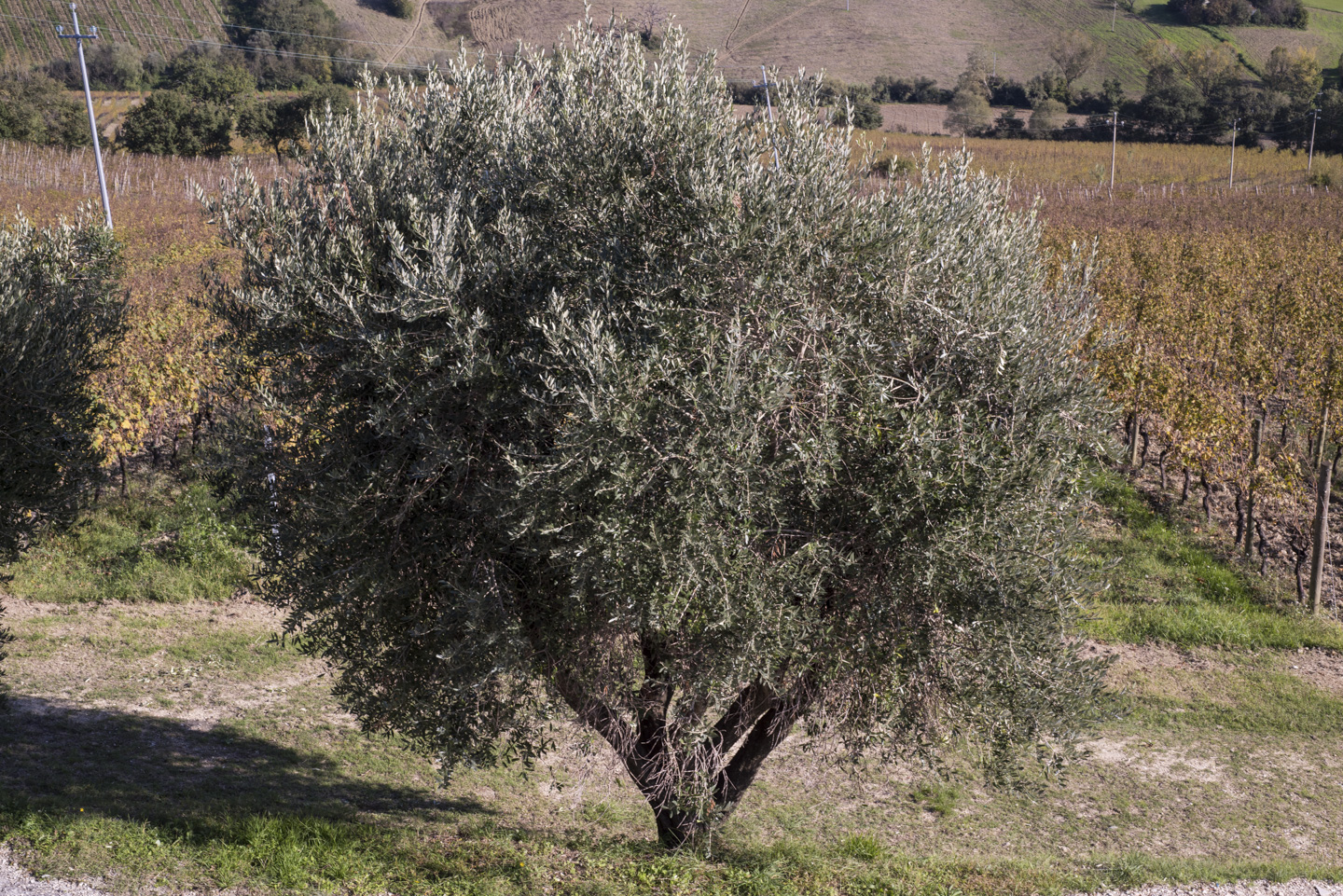
We tried an olive direct from a tree. Unlike with apple trees, where the neighborhood children might sneak in and grab an apple or two, there is no worry about that with olives! They really aren't meant to be eaten that way, since they are extremely bitter fresh off the tree.
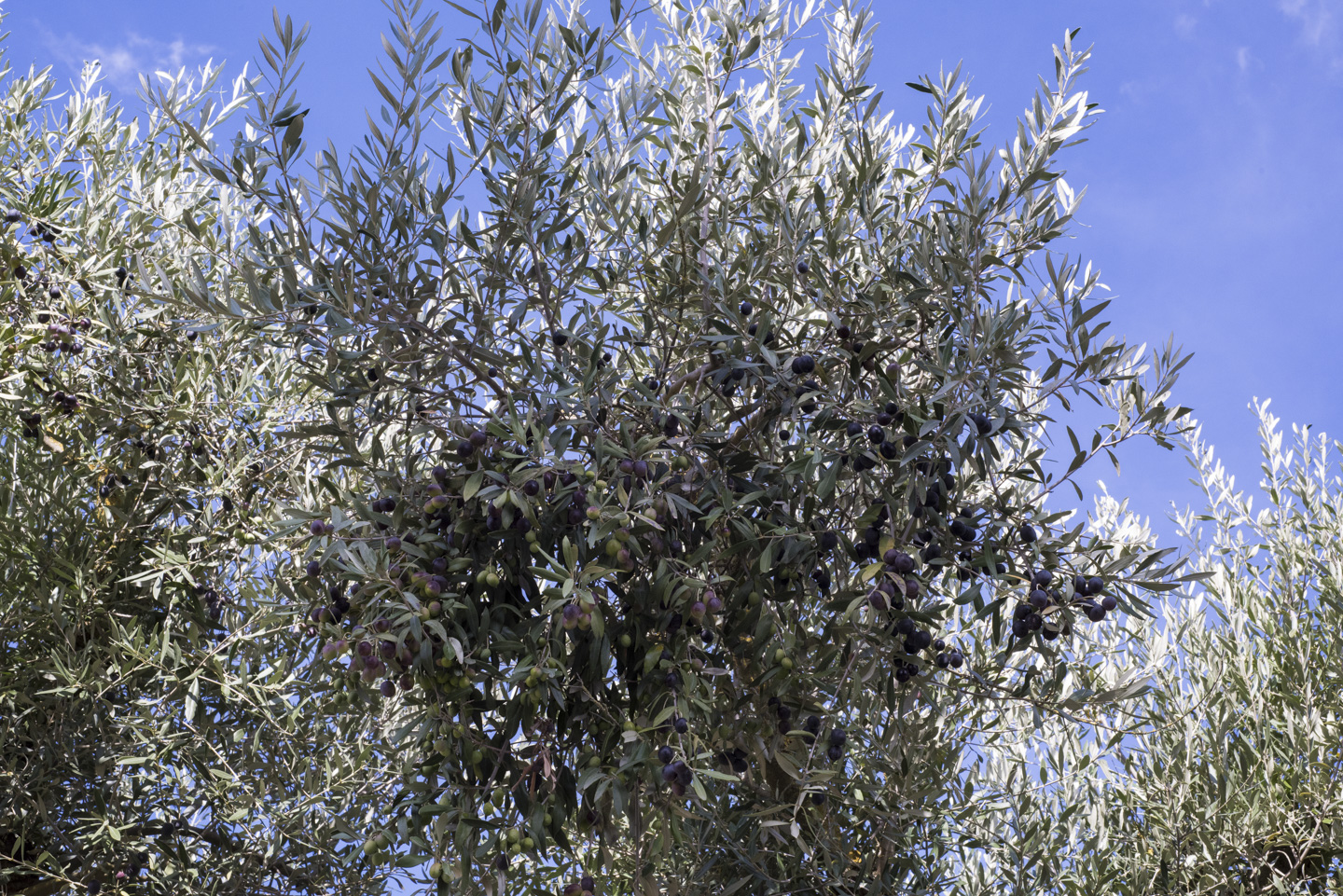
The thumbnail picture below links to a video Paul took from the deck at the vineyard. (78 seconds)
The following day we were treated to more olive information. We went to Cartoceto (point 10 on the map). Francesco had arranged for a tour with Gastronomia Beltrami. We waited in the piazza for our guide.
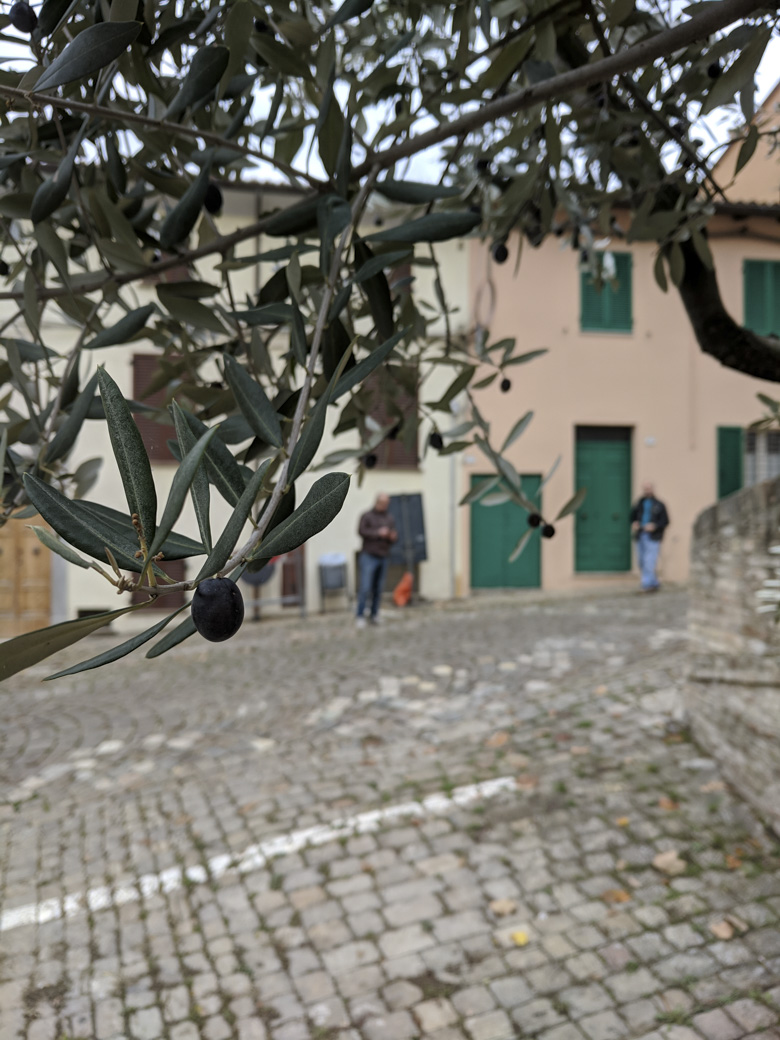
Cartoceto was our first little village to visit, and it was an excellent place to start. Here is the local bar (what we would call a cafe), and you can see the old city center rising behind it.
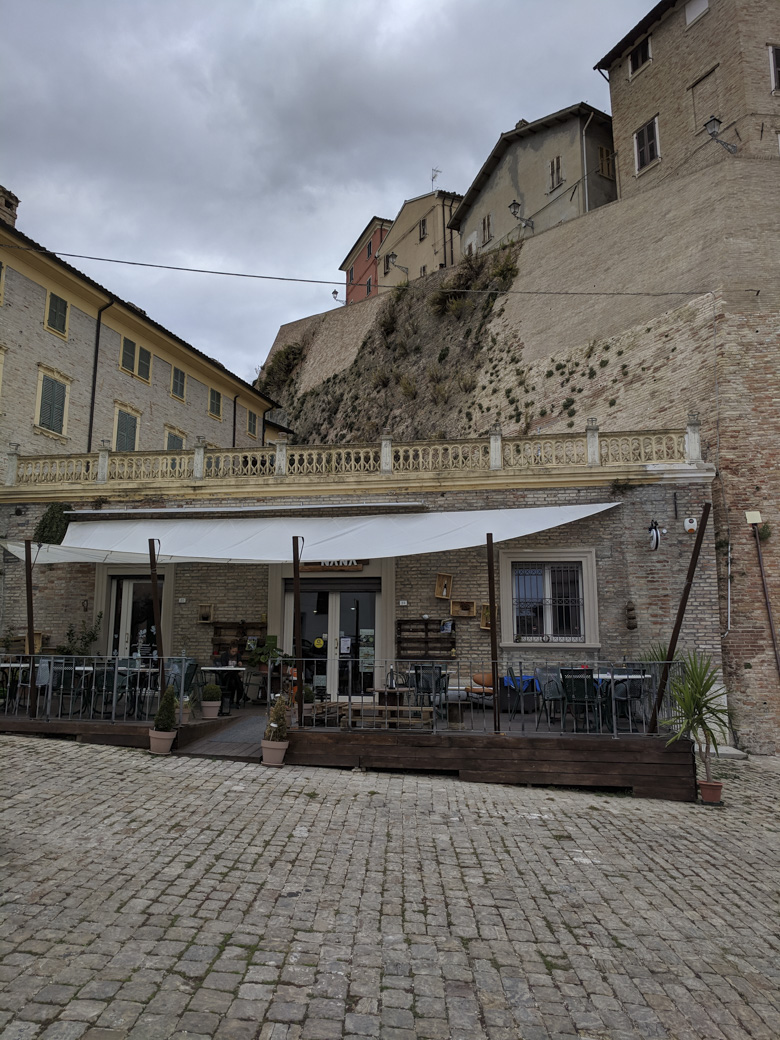
This is why Italians aren't fat:
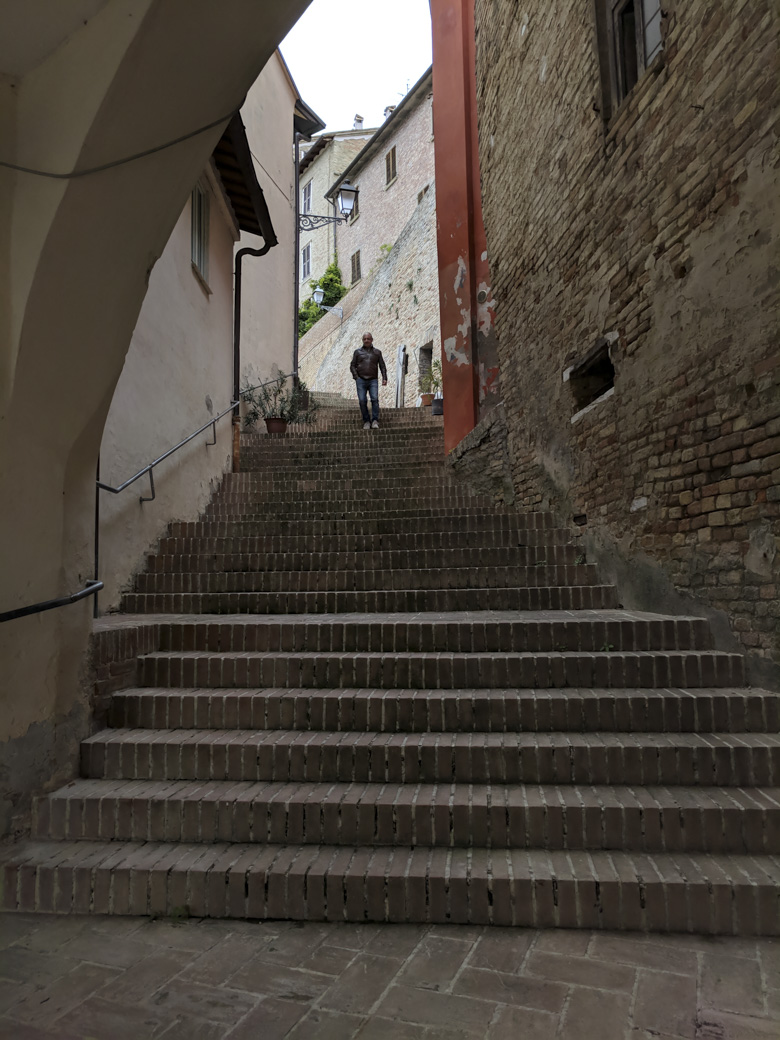
No two doors alike.
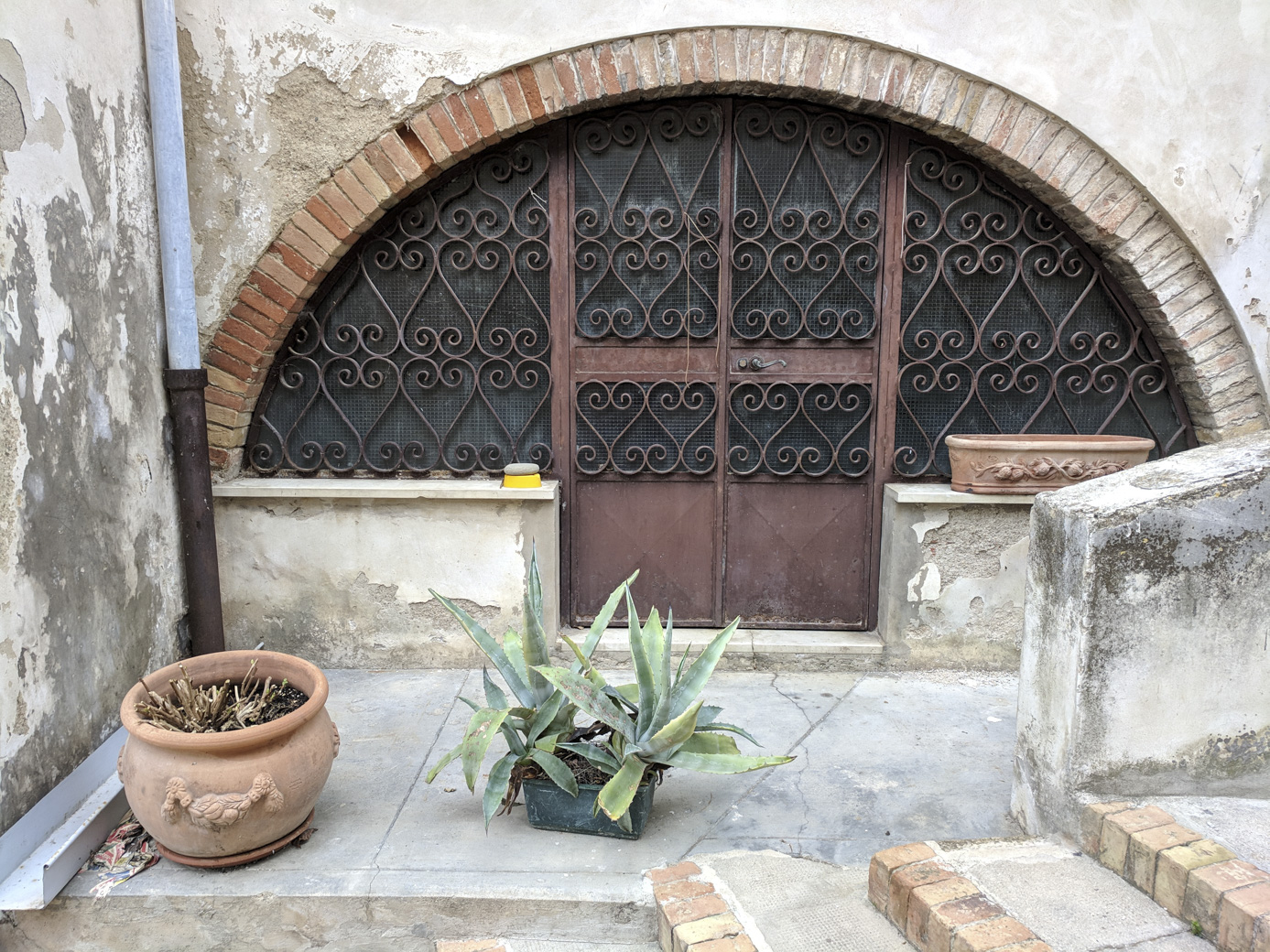
Cristiana Beltrami met us in the piazza. She was our guide, and spoke English well. She was surprised that this was our first time to Italy - and just our second full day - since the tourists she had met previously had always been to some of the big tourist spots (Rome, Venice, etc) before coming here.
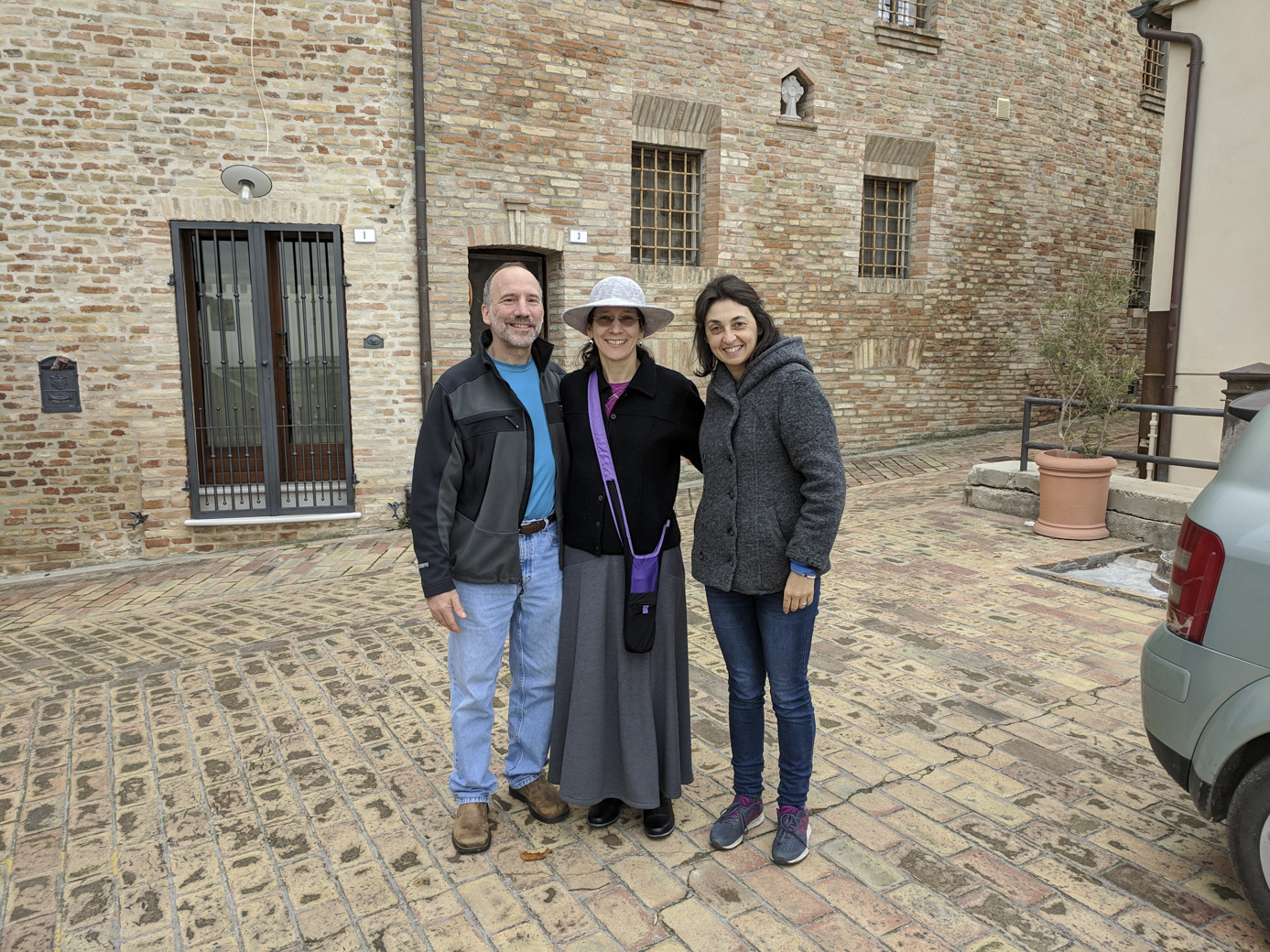
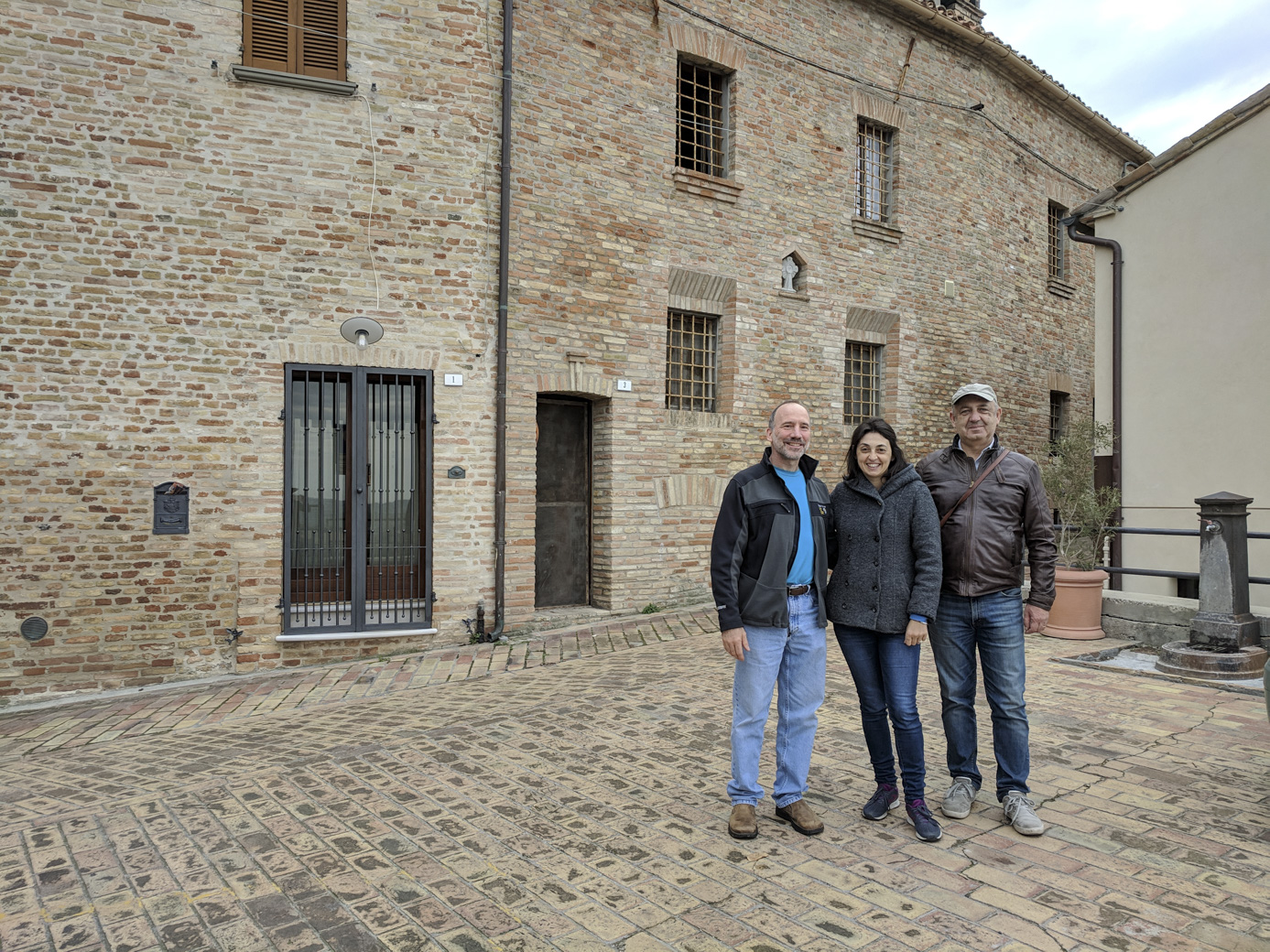
We got to see the olives being processed to make olive oil. In the artisanal process that is used here, the olives are crushed, pits and all, using huge stone wheels.
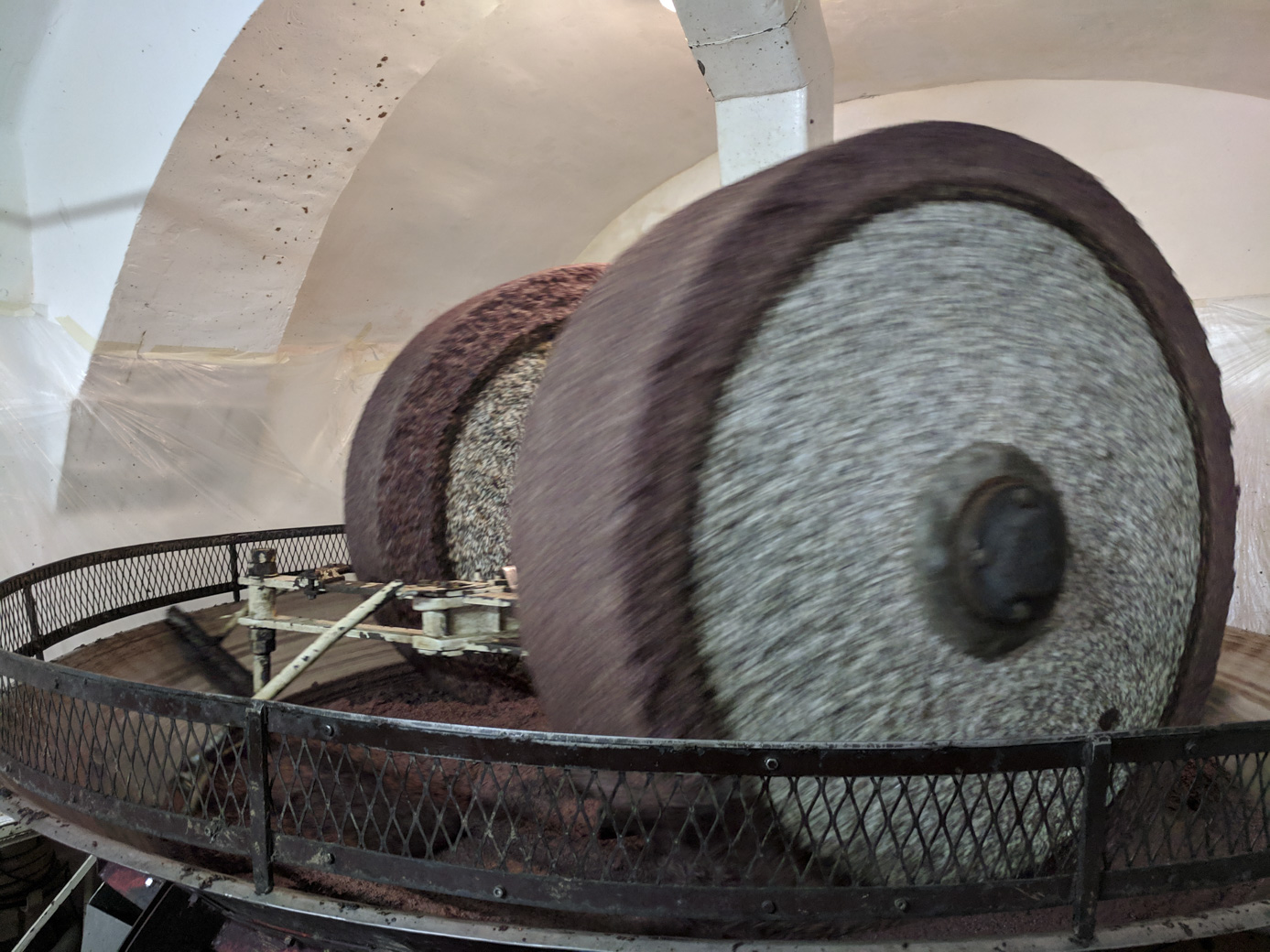
The following video shows the busy scene that greeted us, including the the wheels in action. (29 seconds)
And the following video shows a close-up of those big stone wheels in action. It is a bit loud, though! (32 seconds)
The resulting paste is then put on mats.
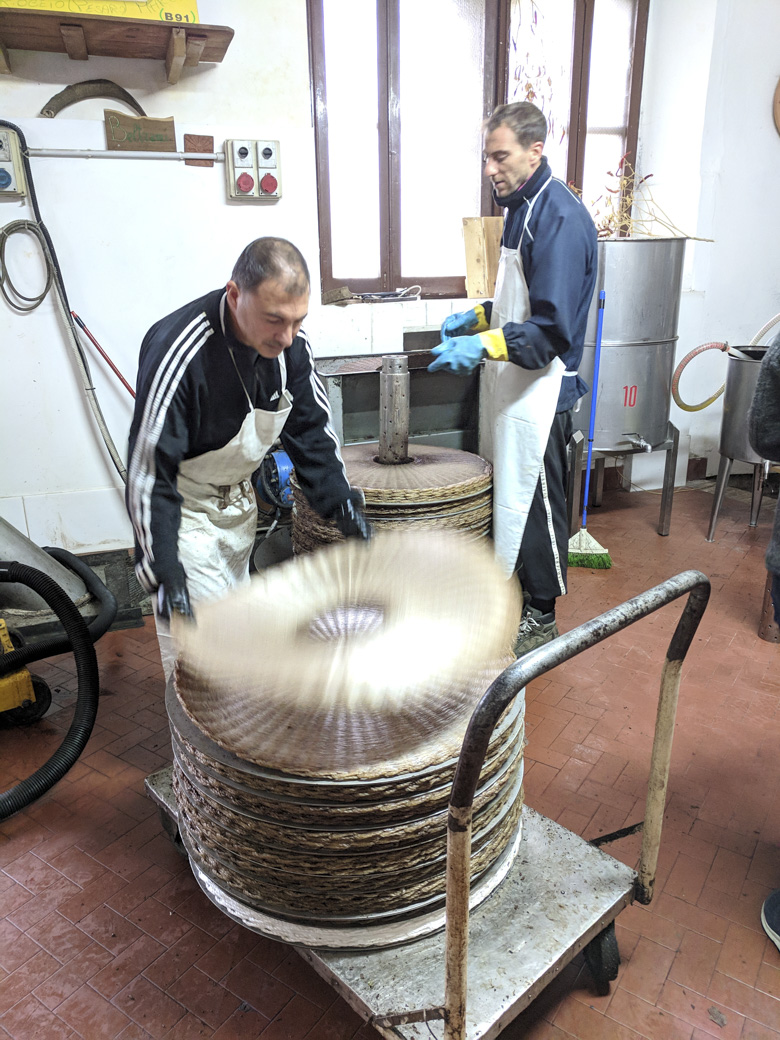
These are then 'cold pressed' to produce the oil. Please watch the following video to see this. You can actually see the olive oil dripping down from the various layers. (22 sec)
And to continue your tour of the olive pressing process, the following video shows the collection of the extracted oil.
If you recall from earlier, olives aren't palatable in their raw state. For eating whole, there are a few options. One traditional method is to slow-roast them for many days.
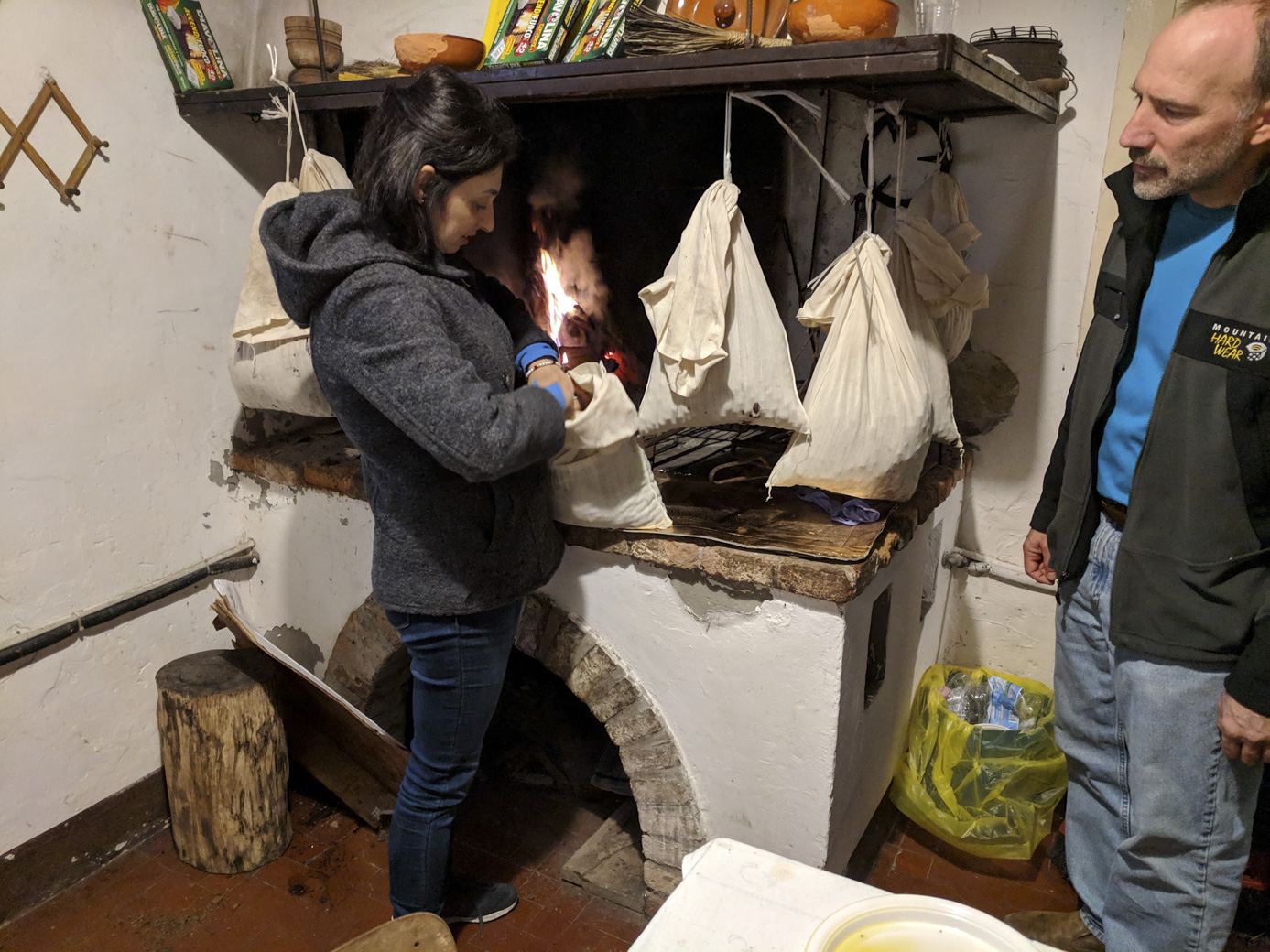
Here is a view of some of the surrounding olive orchards that we saw on our walk from the olive processing to their shop. On the walk, we saw some people sitting in a small park. Cristiana told us that they were waiting for the food truck. There is no grocery store in Cartoceto. Every week, a vendor would come in his truck and bring produce and other supplies.
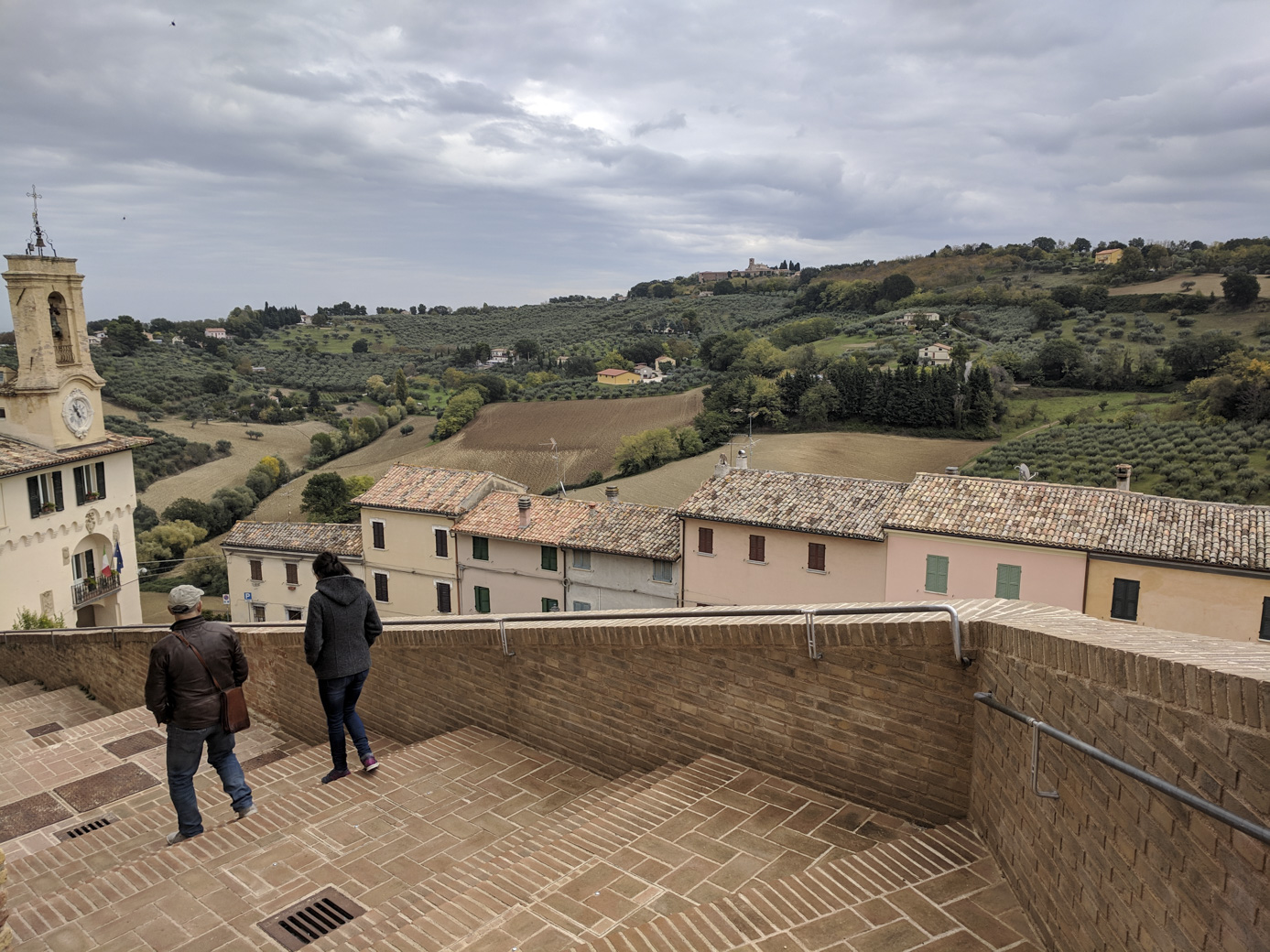
At the shop, we were able to try both their olive oil and some of their cheeses. And we had some fig jam to go with the cheese - that is an excellent combination.
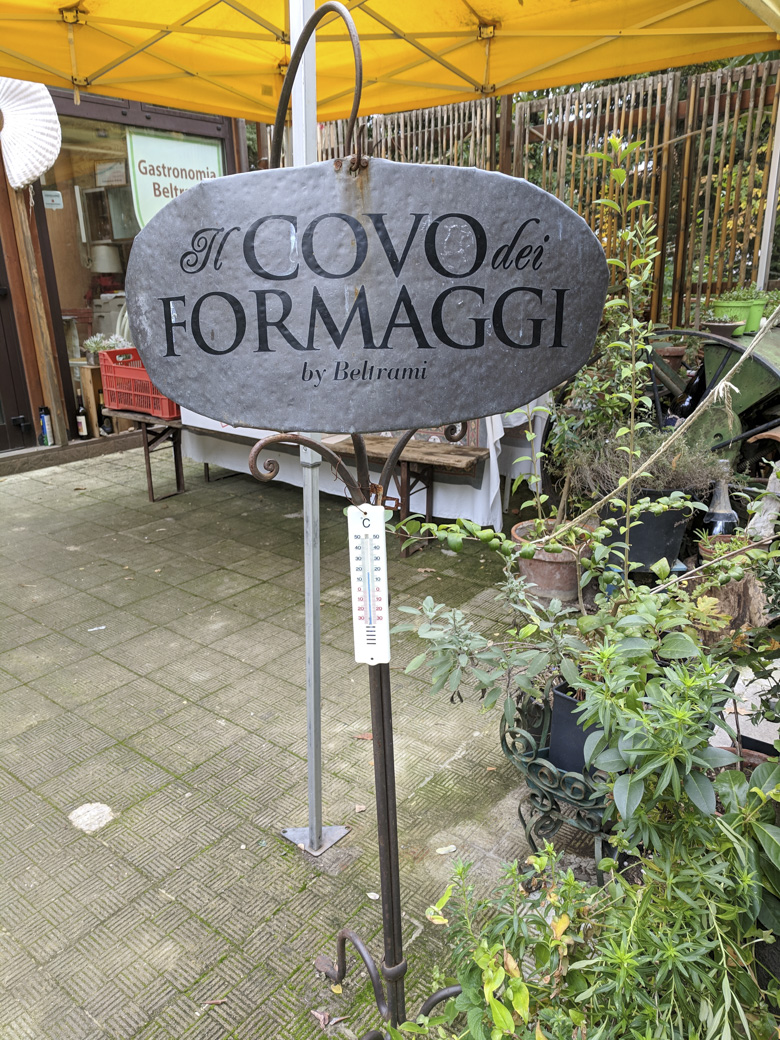
Unfortunately we didn't know at the time of this visit that one of Paul's great-grandfathers, Nazzarino Lucarelli, was born in Cartoceto on the 14th of September, 1881. Perhaps on a future visit we can find out more.
Please continue to page 2 on the tours ...
Updated July 2020